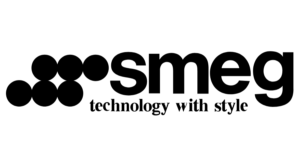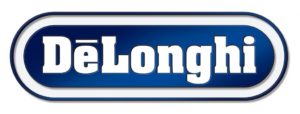With only a few hundred validators, Terra isn’t the most decentralized blockchain. Similar to other DPoS-based blockchains like Cardano, EOS, and TRON, Terra optimizes for performance, scalability, and interoperability while making compromises on the side of decentralization. The instability of Terra’s native stablecoin in May 2022 put much of the Terra ecosystem at risk. This is because it is the only native stable asset that can be used for various decentralized finance (DeFi) activities on this network, be it lending and borrowing or even making simple swaps. Without an effective stablecoin, many of these activities become extremely risk-prone. If a user fails to specify a vote, their vote defaults to the validator they are staked to.
Like other consensus mechanisms, Terra’s DPoS consensus model employs the “carrot and the stick” incentive structure. In Terra’s case, validators and delegators earn the reward or the “carrot” through transaction fees and seigniorage. At the same time, the “stick” is the threat of getting “slashed” or losing the staked LUNA in the case of misconduct.
BITCOIN
Validators must meet strict standards and constantly monitor and participate in the consensus process. When a validator gets slashed, they lose a small portion of their stake as well as a small portion of their delegator’s stake. Slashed validators also get jailed, or excluded, from consensus for a period of time. To become a miner or a validator in Terra, users must either bond (lock for a minimum of 21 days) their own LUNA tokens or have other users delegate their LUNA stakes. LUNA stakers can delegate their tokens to validators to become delegators. To mint UST, users must burn an equivalent dollar amount of LUNA tokens.
Decentralization, Governance, and the Future
Terraform Labs is a Korean blockchain enterprise founded by serial entrepreneurs Daniel Shin and Do Kwon. Terra’s two key ecosystem components are its stablecoins, known as “Terra currencies,” and its governance and utility token, LUNA. The balance of these two components is meant to be analogous to the way the Earth (Terra in Latin) and the Moon (Luna in Latin) rely on each other for gravitational stability and rotation. Stablecoins are assets pegged to the price of a single asset, typically a fiat currency such as the dollar. john bull news and general interest magazines for sale The first generation of stablecoins, such as Tether, maintain their price using a basket of assets including fiat reserves.
Voting process
If a loan falls under its loan-to-value ratio (LTV), it will be liquidated. Anchor targets to reach its so-called Anchor Rate as an interest rate objective. To do so, its smart contract dynamically divides block rewards from collateral bAssets between borrower and depositor. The Terra ecosystem has several notable protocols based on the UST stablecoin, particularly in the DeFi space. At the end of September 2021, Terra launched an upgrade called Columbus-5.
LUNA is also a governance token, and grants holders voting power over the protocol. The LUNA token serves as a volatility absorption tool that also captures rewards through seigniorage and transaction fees. When demand for Terra currencies increases, the system mints Terra currencies, earns LUNA in return, and then burns a portion of the earned LUNA, making the affiliate program ufxaffiliates supply scarcer.
In essence, Terra stablecoins maintain price stability by leveraging market forces. When the value of one UST is below that of $1, users and arbitrageurs can burn one UST to get $1 worth of LUNA. When the value of one UST is above $1 dollar, they can burn $1 worth of LUNA to get novelty coins for sale one UST, collecting the “seigniorage” in the process. TerraUSD (UST), produced by Terraform Labs, is one such algorithmic stablecoin.
- But some advocates of decentralization argue that a centralized entity maintaining a basket of real-world assets introduces a single point of failure into the system.
- Users can find their airdropped Luna by viewing the same wallet address that was present during either snapshot and switching their Station network to the phoenix-1 mainnet.
- If a loan falls under its loan-to-value ratio (LTV), it will be liquidated.
- At the same time, the “stick” is the threat of getting “slashed” or losing the staked LUNA in the case of misconduct.
- You can also use Terra coins across blockchains through Terraform Labs’ Mirror Protocol, which provides stocks that mirror the price of major U.S. firms.
Once accepted, the changes described in a governance proposal are automatically put into effect by the proposal handler. Generic proposals, such as a passed TextProposal, must be reviewed by the Terra team and community, and they must be manually implemented. Treasury Secretary Janet Yellen cited UST’s collapse as yet another reason that stablecoins need to be regulated in 2022. If a proposal fails to meet the minimum deposit amount within the deposit period, the proposal will not enter the voting period, and the deposit will be refunded. Generally, the terms bonding, staking, and delegating can be used interchangeably, as they happen in the same step.
This added functionality for the Inter Blockchain Communication (IBC) protocol, which allowed Terra to become interoperable with other blockchains. Standouts include an insurance protocol called Ozone, and support for UST from cross-blockchain bridge Wormhole V2. In addition to using the assets for some service or utility, there’s a potential arbitrage opportunity.
Delegators stake their Luna to a validator, adding to a validator’s weight, or total stake. In return, delegators receive a portion of transaction fees as staking rewards. While Terra is still primarily developed and maintained by Terraform Labs, LUNA token holders can participate in governance through staking. Terra validators can submit protocol improvement proposals and vote on changes using their staked LUNA as voting power.





